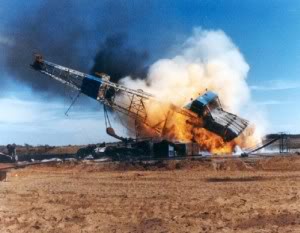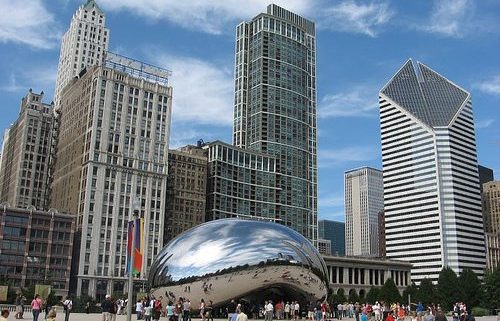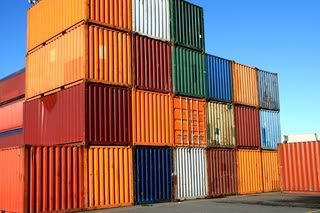In Despicable Me, the latest animated children?s? film from 20th Century Fox, the Bank of Evil, used to finance the nefarious deeds of villains, has listed under its name ?formerly known as Lehman Brothers.?
?Oh, how I despise the yen, let me count the ways.? I?m sure Shakespeare would have come up with a line of iambic pentameter similar to this if he were a foreign exchange trader. I firmly believe that a short position in the yen should be at the core of any hedged portfolio for the next decade, but so far every time I have dipped my toe in the water, it has gotten chewed off by a piranha.
To remind you why you hate the Japanese currency, I?ll refresh your memory with this short list:
* With the world?s weakest major economy, Japan is certain to be the last country to raise interest rates.
* This is inciting big hedge funds to borrow yen and sell it to finance longs in every other corner of the financial markets.
* Japan has the world?s worst demographic outlook that assures its problems will only get worse. They?re not making Japanese any more.
* The sovereign debt crisis in Europe is prompting investors to scan the horizon for the next troubled country. With gross debt approaching 200% of GDP, or 100% when you net out inter agency crossholdings, Japan is at the top of the list.
* The Japanese long bond market, with a yield of 0.1.2%, is a disaster waiting to happen.
* You have two willing co-conspirators in this trade, the Ministry of Finance and the Bank of Japan, who will move Mount Fuji if they must to get the yen down and bail out the country?s beleaguered exporters.
When the big turn inevitably comes, we?re going to ?100, then ?120, then ?150. That works out to a price of $40 for the (YCS), which last traded at $16.35. But it might take a few years to get there. The Japanese government has some on my side with this trade, not that this is any great comfort. Four intervention attempts have so been able to weaken the Japanese currency only for a few nanoseconds.
If you think this is extreme, let me remind you that when I first went to Japan in the early seventies, the yen was trading at ?305, and had just been revalued from the Peace Treaty Dodge line rate of ?360. To me the ?83 I see on my screen today is unbelievable. That would then give you a neat 15 year double top.
It?s All Over For the Yen
There are a lot of belles at the ball, but you can?t dance with all of them.
While a student at UCLA in the early seventies, I took a World Politics course which required me to pick a country, analyze its economy, and make recommendations for its economic development. I chose Algeria, a country where I had spent the summer of 1968 caravanning among the Bedouins, crawling out of the desert half starved, lice ridden, and half dead.? I concluded that the North African country should immediately nationalize the oil industry, and raise prices from $3/barrel to $10.? I knew that Los Angeles based Occidental Petroleum (OXY) was interested in exploring for oil there, so I sent my paper to the company for review. They called the next day and invited me to their imposing downtown headquarters, then the tallest building in Los Angeles.
I was ushered into the office of Dr. Armand Hammer, one of the great independent oil moguls of the day, a larger than life figure who owned a spectacular impressionist art collection, and who confidently displayed a priceless Faberg? egg on his desk. He said he was impressed with my paper, and then spent two hours grilling me. Why should oil prices go up? Who did I know there? What did I see? What was the state of their infrastructure? Roads? Bridges? Rail lines? Did I see any oil derricks? Did I see any Russians? I told him everything I knew, including the two weeks in an Algiers jail for taking pictures in the wrong places. His parting advice was to never take my eye off the oil industry, as it is the driver of everything else. I have followed that advice ever since.
When I went back to UCLA I told a CIA friend of mine that I had just spent the afternoon with the eminent doctor (Marsha, call me!). She told me that he had been a close advisor of Vladimir Lenin after the Russian Revolution, had been a double agent for the Soviets ever since, that the FBI had known this all along, and was currently funneling illegal campaign donations to President Richard Nixon. Shocked, I kicked myself for going into an interview so ill prepared, and had missed a golden opportunity to ask some great questions. I never made that mistake again.
Some 40 years later, while trolling the markets for great buying opportunities set up by the BP oil spill, I stumbled across (OXY) once more (click here for their site at?http://www.oxy.com ). (OXY) has a minimal offshore presence, nothing in deep water, and huge operations in the Middle East and South America. It was the first US oil company to go back into Libya when the sanctions were lifted in 2005. (OXY?s) substantial California production is expected to leap to 45% to 200,000 barrels a day over the next four years. Its horizontal multistage fracturing technology will enable it to dominate California shale. The has raised its dividend for the eighth year in a row, by 15% to 1.60%. Need I say more?
The clear message that has come out of the BP oil spill is that onshore energy resources are now more valuable than offshore ones. I decided to add it to my model portfolio. Energy is one of a tiny handful of industries I am willing to put my money in these days (technology and commodities are the others), and BP has handed me a rare opportunity to get in as the tightwad that I truly am.
Oh, and I got an A+ on the paper, and the following year Algeria raised the price of oil to $12.
A Faberge Egg
I always thought that a great strategy for a new hedge fund would be to only buy positions from existing hedge funds that were blowing up. That fund would buy securities subject to margin calls and distressed liquidations, which are by definition at six standard deviation extremes. It would not trade very often, but few it executed on would be humdingers.
If I were running such a fund today, I would be getting reading to short natural gas.
There has been a lot of talk about using CH4 to bridge our way to a carbon free economy because it produces half the CO2 that coal does. But virtually nothing has been done to put the infrastructure in place needed to consume the newly found 100 year supply in the US. To burn significantly more of this simple molecule, you need vastly more pipelines, power plant conversions, and above all, storage, than we have now. So far there has been a lot of talk (thanks, Boone), but little action.
Until then, the big production companies, like Chesapeake Energy (CHK) and Devon Energy (DVN) are going to race to out produce each other, praying they can use volume to offset price cuts, creating a huge weight on prices.
When natural gas was trading at $6 at the beginning of the year, I warned readers to stay away. Gas then launched into an agonizing, three month plunge, where it lost one third of its value. The ETF (UNG) did even worse, spiraling down 38%, as the widening contango decimated investors.
Since October, battered CH4 has rallied 28% off its $3.50 low. Talking heads on TV have explained this is because of the the record breaking cold weather we are seeing this winter, the imminent passage of a gas subsidies in congress, or because of crude supply shortages caused by the deep water drilling ban.
Don?t believe a single word of this. The supply overhang and storage shortage for this diminutive molecule is still as bad as it ever was. If we can claw our way back to the last high of $5, I think natural gas would be a screaming short again. The way to play this will be to short the United States Natural Gas Fund (UNG), which because of the straightjacket that limits its investment to near month futures contracts, is one of the worst performing funds in ETF land with the greatest tracking error to the underlying.
Natural Gas Prices Are Headed For Another Fall
I received some questions last week on my recent solar pieces as to whether I minded paying more money for ?green? power. My answer is ?hell no,? and I?ll tell you why. My annual electric bill comes to $1,500 a year. Since the California power authorities have set a goal of 33% alternative energy sources by 2020, PG&E (PGE) has the most aggressive green energy program in the country. More expensive solar, wind, geothermal, and biodiesel power sources mean that my electric bill may rise by $150-$300 a year.
Now let?s combine my electricity and gasoline bills. Driving 15,000 miles a year, my current gasoline engine powered car uses 750 gallons a year, which at $3/gallon for gas costs me $2,250/year. So my annual power/gasoline bill is $3,750. My new all electric Nissan Leaf (NSANY) will cost me $180/year to cover the same distance. Even if my power bill goes up 20%, as it eventually will, thanks to the Leaf, my power/gasoline bill plunges to $1,980, down 47%.
There is an additional sweetener which I?m not even counting. I also spend $1,000/year on maintenance on my old car, including tune ups and oil changes. The Nissan Leaf will cost me next to nothing, as there are no oil changes or tune ups, and my engine drops from using 400 overcooked parts to just five. We?re basically talking tires and brake pads only.
There is a further enormous pay off down the road. We are currently spending $100 billion a year in cash up front fighting our wars in the Middle East, or $273 million a day! Add to that another $200 billion in back end costs, including wear and tear on capital equipment, and lifetime medical care for 3 million veterans, some of whom are severely torn up.
We import 9.1 million barrels of oil each day, or 3.3 billion barrels a year, worth $270 billion at $82/barrel. Some 2 million b/d, or 730 million barrels/year worth $60 billion comes from the Middle East. That means we are paying a de facto tax which amounts to $136/barrel, taking the true price for Saudi crude up to a staggering $219/barrel!
We are literally spending $100 billion extra to buy $60 billion worth of oil, and that?s not counting the lives lost. Even worse, all of the new growth in Middle Eastern oil exports is to China, so we are now spending this money to assure their supplies more than ours. Only a government could come up with such an idiotic plan.
There is another factor to count in. Anyone in the oil industry will tell you that, of the current $90 price for crude, $30 is a risk premium driven by fears of instability in the Middle East. The Strategic Petroleum Reserve, every available tanker, and thousands of rail cars are all chocked full with unwanted oil. This is why prices remain high.
The International Energy Agency says the world is now using 87 million b/d, or 32 billion barrels a year worth $2.6 trillion. This means that the risk premium is costing global consumers $950 billion/year. If we abandon that oil source, the risk premium should fall substantially, or disappear completely. What instability there is becomes China?s headache, not ours.
If enough of the country converts to alternatives and adopts major conservation measures, then we can quit importing oil from that violent part of the world.? No more sending our president to bow and shake hands with King Abdullah. Oil prices would fall, our military budget would drop, the federal budget deficit would shrink, and our taxes would likely get cut.
One Leaf shrinks demand for 750 gallons of gasoline, or 1,500 gallons of oil per year. That means that we need 20.4 million Leafs on the road to eliminate the need for the 2 million barrels/day we are importing from the Middle East. The Department of Energy has provided a $1.6 billion loan to build a Nissan plant in Smyrna, Tennessee that will pump out 150,000 Leafs a year by end 2012. Add that to the million Volts, Tesla S-1?s, is Mitsubishi iMiEV?s hitting the market in the next few years. Also taking a bite out of our oil consumption are the 1 million hybrids now on the road to be joined by a second million in the next two years. That goal is not so far off.
Yes, these are simplistic, back of the envelop calculations that don?t take into account other national security considerations, or our presence on the global stage. But these numbers show that even a modest conversion to alternatives can have an outsized impact on the bigger picture.
By the way, please don?t tell ExxonMobile (XOM) or BP (BP) I told you this. They get 80% of their earnings from importing oil to the US. I don?t want to get a knock on the door in the middle of the night.
Is This Worth It?
This is the last chance to? join me for lunch for the Mad Hedge Fund Trader?s Global Strategy Update, which I will be conducting in Chicago on Tuesday, December 27, 2011. A three course lunch will be followed by a PowerPoint presentation and an extended question-and-answer period.
I?ll be giving you my up-to-date view on stocks, bonds, currencies, commodities, precious metals, and real estate. And to keep you in suspense, I?ll be throwing a few surprises out there too. Enough charts, tables, graphs, and statistics will be thrown at you to keep your ears ringing for a week. Tickets are available for $229.
Yes, I know the timing is not the best. But family business brings me to the Windy City this week. As I am hopelessly addicted to the financial markets, I am counting on you to give me my weekly fix. So this luncheon is aimed at those unloved souls left behind by family or significant others who are off vacationing in the Bahamas, skiing at St. Moritz, or are visiting relatives in Wisconsin.
I?ll be arriving an hour early and leaving late in case anyone wants to have a one on one discussion, or just sit around and chew the fat about the financial markets.
The lunch will be held at a downtown Chicago venue on Monroe Street that I will email to you with your purchase confirmation.
I look forward to meeting you, and thank you for supporting my research. To purchase tickets for the luncheons, please go to my online store.
[button size="large" color="red"]Sold Out[/button]
When I was growing up in Los Angles during the fifties, the most exciting day of the year was when my dad took me to buy a Christmas tree. With its semi desert climate, Southern California offered pine trees that were scraggly at best. So the Southern Pacific Railroad made a big deal out of bringing trees down from much better endowed Oregon to supply holiday revelers.
You had to go down to the freight yard at Union Station on Alameda Street to pick them up. I remember a jolly Santa standing in a box car with trees piled high to the ceiling, pungent with seasonal evergreen smells, handing them out to crowds of eager, smiling buyers for a buck apiece. Watching great lumbering steam engines as big as houses whistling and belching smoke was enthralling.
We took our prize home to be decorated by seven kids hyped on adrenalin, chugging eggnog. A half century later, the Southern Pacific is gone, the steam engines are in museums, anyone going near a rail yard would be mugged or arrested for vagrancy, and Dad long ago passed away. Dried out trees at Target for $30 didn?t strike the right chord.
So I bundled the kids into the SUV and drove to the primeval, foggy coastal redwood forests of Northern California. Five miles down a muddy logging road, it was just us and a million trees. The kids, hyped on adrenalin, made the decision about which perfect eight footer to take home. I personally chopped it down, tied it to the roof, and drove us the three hours home. With any luck, these memories will last until the next century, long outlast me.
To the dozens of subscribers in Iraq, Afghanistan, and the surrounding ships at sea, thank you for your service! I think it is very wise to use your free time to read my letter and learn about financial markets in preparation for an entry into the financial services when you cash out. Nobody is going to call you a baby killer and shun you, as they did when I returned from Southeast Asia four decades ago.
I have but one request. No more subscriptions with .mil addresses, please. The Defense Department, the CIA, the NSA, Homeland Security, and the FBI do not look kindly on newsletters entering the military network, even the investment kind. If you think civilian spam filters are tough, watch out for the military kind! And no, I promise that there are no secret messages embedded with the stock tips. ?BUY? really does mean ?BUY.?
If I did not know the higher ups at these agencies, as well as the Joints Chiefs of Staff, I might be bouncing off the walls in a cell at Guantanamo by now. It also helps that many of the mid level officers at these organizations have made a fortune with their meager government retirement funds following my advice. All I can say is that if the Baghdad Stock Exchange ever become liquid, I?m going to own it.
Where would you guess the greatest concentration of readers The Diary of a Mad Hedge Fund Trader is found? New York? Nope. London? Wrong. Chicago? Not even close. Try a ten mile radius centered on Langley, Virginia, by a large margin. The funny thing is, half of the subscribing names coming in are Russian. I haven?t quite figured that one out yet.
So keep up the good work, and fight the good fight. But please, only subscribe to my letter with personal Gmail or hotmail addresses. That way my life can become a lot more boring. Oh, and by the way, Langley, you?re behind on you bill. Please pay up, pronto, and I don?t want to hear whining about any damn budget cuts!
I Want My Mad Hedge Fund Trader!
?Unless developed economies learn to compete the old fashioned way ? by making more goods and making them better, the smart money will continue to move offshore to Asia, Brazil, and other developing economies both in the asset and the currency space. The United States, in short, needs to make things, and not paper,? said Bill Gross, the managing director and co- chief investment officer of bond giant PIMCO.
Those of you counting on getting your old union assembly line job back in Detroit can forget it.
The recent eight year forecast published by the Bureau of Labor Statistics shows that 4.19 million jobs will be gained in the US in professional and business services, followed by 4 million health care and social assistance jobs, while 1.2 million will be lost in manufacturing. This is great news for website designers, Internet entrepreneurs, registered nurses, and masseuses in California, but grim tidings for traditional metal bashers in the rust belt manufacturing states like Michigan, Indiana, and Ohio.
I?m so old now that I am no longer asked for a driver?s license to get into a night club. Instead, they ask for a carbon dating. The real challenge for we aged career advisors is that probably half of these new service jobs haven?t even been invented yet, and if they can be described, it is only in a cheesy science fiction paperback with a half dressed blond on the front cover. After all, who heard of a webmaster, a cell phone contract sales person, or a blogger 40 years ago? Where are all these jobs going to? You guessed it, China, which by my calculation, has imported 25 million jobs from the US over the past decade. You can also blame other lower waged, upstream manufacturing countries like Vietnam, where the Middle Kingdom is increasingly subcontracting its own offshoring.
These forecasts may be optimistic, because they assume that Americans can continue to claw their way up the value chain in the global economy, and not get stuck along the way, as the Japanese did in the nineties. The US desperately needs no less than 27 million new jobs to soak up natural population and immigration growth and get us back to a traditional 5% unemployment rate. The only way that is going to happen is for America to invent something new and big, and fast. Personal computers achieved this during the eighties, and the Internet did the trick in the nineties. The fact that we?ve done diddly squat since 2000 but create a giant paper chase of subprime loans and derivatives explains why job growth since then has been zero, real wage growth has been negative, and American standards of living are falling.
Alternative energy and biotechnology are two possible drivers for a new economy. Unfortunately, the last administration did everything it could to stymie progress in both these fields, coddling big oil so China could steal a lead in several alternative technologies, and starving stem cell researchers of Federal cash, ceding the lead there to others. While the current crop of politicians extol the virtues of education, the reality is that we are dumbing down our public education system and chopping budgets with a hatchet. How do we invent the next ?new? thing, while shrinking the University of California?s budget by 20% two years in a row? If my local high school can?t afford new computers, how is it going to feed Silicon Valley with computer literate work force? The US has a ?Michael Jackson? economy. It?s still living like a rock star, but hasn?t had a hit in 20 years.
China can have all the $20 a day jobs it wants. But if it accelerates its move up the value chain, as it clearly aspires to do, then America is in for even harder times. I?ll be hoping for the best, but preparing for the worst. How do you say ?unemployment check? in Mandarin?
Legal Disclaimer
There is a very high degree of risk involved in trading. Past results are not indicative of future returns. MadHedgeFundTrader.com and all individuals affiliated with this site assume no responsibilities for your trading and investment results. The indicators, strategies, columns, articles and all other features are for educational purposes only and should not be construed as investment advice. Information for futures trading observations are obtained from sources believed to be reliable, but we do not warrant its completeness or accuracy, or warrant any results from the use of the information. Your use of the trading observations is entirely at your own risk and it is your sole responsibility to evaluate the accuracy, completeness and usefulness of the information. You must assess the risk of any trade with your broker and make your own independent decisions regarding any securities mentioned herein. Affiliates of MadHedgeFundTrader.com may have a position or effect transactions in the securities described herein (or options thereon) and/or otherwise employ trading strategies that may be consistent or inconsistent with the provided strategies.




























